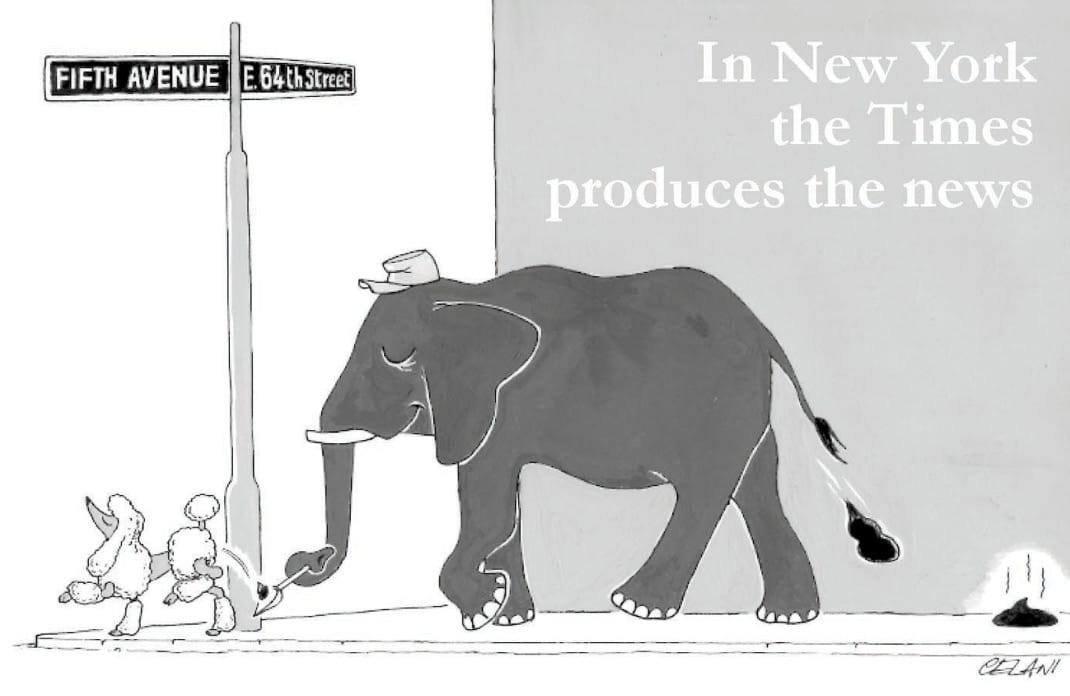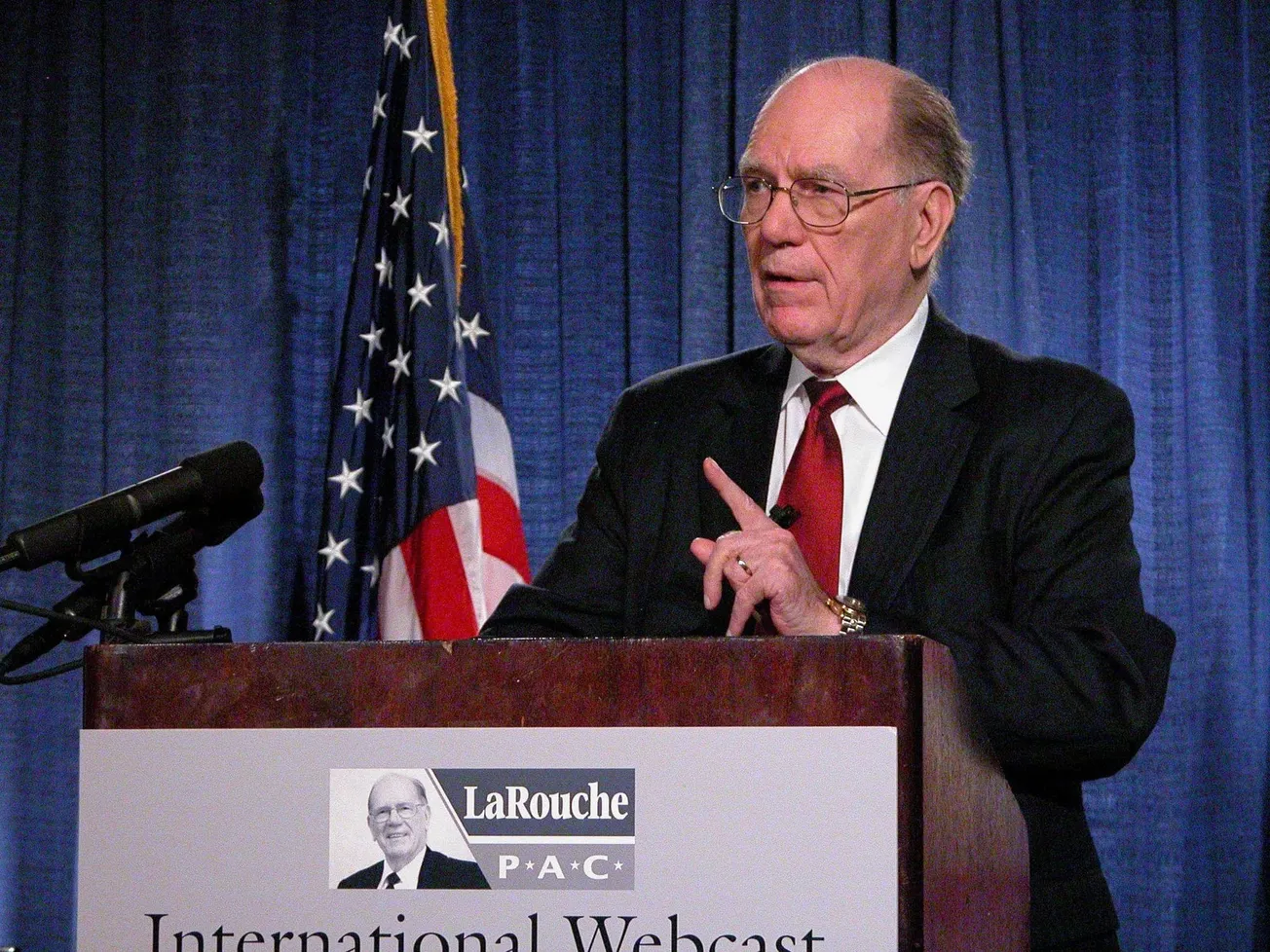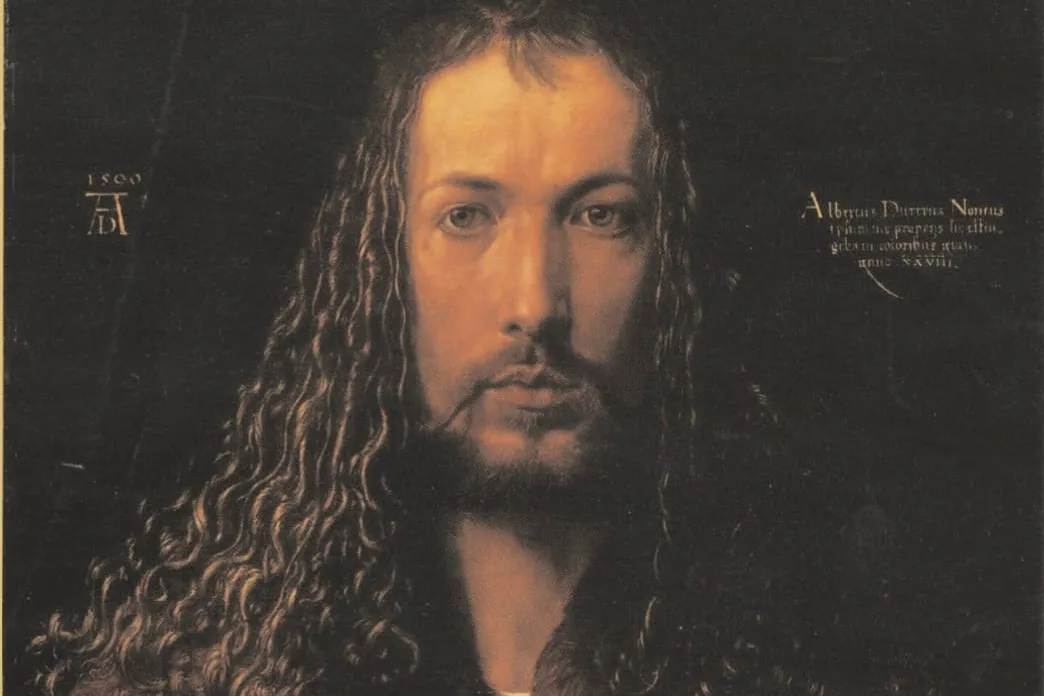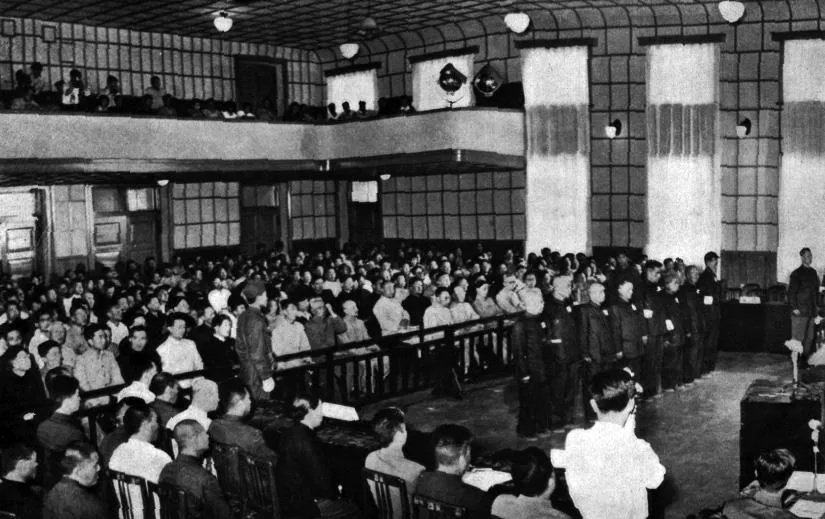The Schiller Institute on September 8, 2022 released the First Edition of the “Festschrift for Lyndon H. LaRouche, Jr., September 8, 1922 – February 12, 2019 on the Centennial of His Birth.” Claudio Celani provided to EIR, on the occasion of EIR’s 50th anniversary, an expanded text of his tribute to Mr. LaRouche for that 2022 Centennial celebration.
Lyn was famous for his jokes. He used to crack jokes during a public speech, during political meetings, and with friends at home, possibly after a Musikabend and over a glass of wine. His punchlines were tremendous, but sometimes he would start elaborating an ironical idea: the first version left you cold; the second made you laugh, and the third one would send you to the floor.
Sometimes at the beginning of the 1980s, Lyn discovered one of my neglected talents: caricatures. I started drawing very early, like every child, but I soon realized my special aptitude when I saw that all other kids would draw a house with the distant end of the roof going up in a straight line from the line of the distant corner of the side wall. For me, it was natural to reproduce that roof line in an angle with the wall, parallel to the line of the closest edge of the roof. A rudimentary perspective (without scorcio, as the Renaissance painters called it). When I was not playing outside, during infancy and boyhood I kept spending time at home drawing and copying anything not too difficult. Teachers in my elementary and middle school would encourage my talent with good scores (in middle school I got the top score, something that never happens in any discipline, and I managed to keep it until the end).
Sometimes I engaged in portraits, with alternating luck. As a young adult, I became politicized and joined the LaRouche movement in 1973. After an experience in building the European center in Wiesbaden, Germany, I moved to Rome and Milan, where I led the local intelligence group. Back to Wiesbaden, I became the chief editor of the Italian version of our weekly newspaper, Nuova Solidarietà. Someone had the idea for a cartoon, and I improvised one, which was immediately successful and published. At that point, entered Lyn.
It all started during a conversation with the Italian group on the Italian political situation. At that time, Socialist Party leader Bettino Craxi was rising as a “strong man” figure and was backed by the United States as an alternative to the rule of the Christian Democratic party. We decided to upgrade our campaign against Craxi: Lyn had the idea of depicting him in a cartoon, or a strip, as an epigone of Benito Mussolini. But not in a serious way: Craxi should be portrayed as a “little” Mussolini, a “Balilla” (the name of the fascist youth). “Crasso Balilla” was born.
Lyn gave the idea for the first strip. I rendered as well as I could, and the first strip was followed by a second, a third, and so on, week after week. In the course of time, I improved my rendition of Craxi as a comic strip-like caricature, and my strips started to be populated with caricatures of other political leaders: Andreotti, Mitterrand, Qaddafi, etc. I do not remember when and why we stopped. For sure, our political attitude towards Craxi changed when he finally became Prime Minister. We acknowledged that, with all his concessions in economic policy, Craxi was following a healthy foreign policy, endorsing President Reagan’s (and LaRouche’s) SDI. Eventually, when Craxi became a target for the “Mani Pulite” [Clean Hands—ed.] investigation and went into exile to avoid incarceration, we defended him from what we considered to be a politically motivated legal persecution. I became acquainted with Craxi’s closest friend and official biographer, editor Massimo Pini, whom I introduced to LaRouche, The two got along quite well and eventually Pini provided, through contacts, the opportunity for Lyn to hold a conference at the seat of the European Parliament in Strasbourg.
As for Craxi himself, before leaving Italy he held a memorable speech in the Parliament, in which he accused all political parties of being part of the same scheme of illegal party financing of which his own PSI was accused. In leaving the plenary room, Craxi handed out to journalists an EIR memorandum entitled, “The Destruction of a National Economy,” saying: “Do you want to know what is going on? Read this.” It was the exposure of the famous 1992 meeting on Queen Elisabeth’s yacht, Britannia, to plan Italian privatizations.
The second phase of Lyn’s input into the artistic part of my political activity developed after he got out of prison, in the mid-nineties. This time it was more intense and lasting, because he started to launch cartoon ideas in rapid-fire, putting me under pressure. He once told me: Look, when I write articles, they are more effective with a good cartoon. How can you say no?
Thus most cartoons I made during the Clinton–G.W. Bush era, published by EIR, were commissioned by Lyn, even if the public does not know—because, with few exceptions, I signed only with my name. I thought that by signing with both names people would think that I wanted to make myself important. Lyn never protested over that. Well, now it is time to do justice to his role. He was always satisfied with the finished product. I did my best and, although I was no professional cartoonist, I never delivered a cartoon if I was not satisfied with it. Especially, if I judged that the caricature was not good enough. I would consider it a failure if the viewer did not recognize instantly the depicted person and/or if the person’s name had to be written under it.
True, Lyn’s cartoon ideas, even when challenging, were always in the realm of the possible. Often I received from colleagues and friends proposals for this or that cartoon, most of which were unfeasible. Most people think that an artistic production flows out “naturally” from the artist’s pencil or brush; this is almost never the case. There is a lot of work behind the stuff, hours spent in studying the character, looking for pictures with the best angles, etc. Caricatures are a further development of portraits. A good portrait-maker is not necessarily a good caricaturist. A caricaturist develops a special eye for those features of the character’s face that can be exaggerated, at the same time maintaining or even improving the viewer’s recognition of the person. A good caricaturist has developed a capacity to accomplish this almost “naturally,” but it is the product of years of work. For somebody like me, who dedicated only some hours a week—mostly the last production day of the newspaper, between Saturday and Sunday—it was more difficult. The experience that professionals acquire in a week, I needed a few months for.
Thus, given the time and other constraints, I could deliver a good cartoon only if the number of new caricatures involved was limited. In the best case, if it was only one person.
Whereas most people were coming to me proposing cartoons crowded with a dozen characters, Lyn seemed perfectly aware of the problem and commissioned deliverable cartoons: one character, sometimes two, one idea based on a metaphor or a pun. You can judge yourself, as it is time to let the cartoons speak.
Let us start with Crasso Balilla.


This is the very first Crasso Balilla strip. Lyn suggested Crasso should be in a zoo, in a cage beside the monkeys, and shown to children as an exemplar of the fascist species. The text says: “I would prefer a hundred times to be shot ... or even hung upside down ... as long as they take me seriously!”


In the next, a later strip, you will notice that both Crasso’s figure has evolved, both in a simplified and more comic-like caricature and in his uniform, possibly not historically truthful (young Balillas wore a white shirt) but more immediately conveying the fascist (black shirts) idea. The text is not from Lyn, and it is somehow prophetic, as it exposed the oligarchical strategy to take power in Italy through financial technocrats. The two characters depicted along with Crasso are former central banker and Treasury Minister Guido Carli (“Tarli”) and financier Carlo De Benedetti (“De Maledetti”), leading left-liberal influencer through his newspaper La Repubblica and the weekly L’Espresso. Carli is no longer around, while De Benedetti is still doing damage. The two sinister characters say: “Remember, Crasso, that you are only an instrument ... and that you must obey our orders.... In other words, we make the coup.” “The Colonels’ Coup?” asks Crasso, in reference to the famous 1967 Greek military coup. “No, the Generals’ Coup!” they answer, making a pun on the word “Generali,” which means both the Generals and the Generali insurance company, one of the largest in Europe and a key center of power in Italy. The “P1 Lodge” under the Generali Lion is a reference to the level of secret masonic networks, higher than the famous P2 lodge that was discovered in 1981.


The following strip is a sequel to the technocratic theme. Crasso asks the incappucciato: “Grand Master of the Technocrats Lodge, what model should I follow for my first 100 days?”
The Grand Master answers: “Well, there are basically two [models]: one is Roosevelt....”
“No, I should fight fascism.... It is no good. Which one is the other model?”
“Napoleon,” the Master answers, evoking an image of an unhappy end in Crasso’s head.


To conclude the Crasso series, here is a strip on the campaign to lift the ban against the former king and his descendants. After the 1946 Referendum that approved the Republican Constitution, the Savoy family was forced into exile. In the eighties, several politicians started a campaign to lift the ban. In the strip, we see Crasso with the late King Umberto II, who says: “Dear Crasso, our restoration to the Throne is imminent. Beside the PSI, we have support from the MSI, the Christian Democrats, the Liberals, the Social Democrats, the Republicans and the Radicals. And now, even from the Communists and the radical Left.” And the punchline: “The area of Monarco-syndicalism is born!” Eventually, the ban was lifted. Too late for the former King, but not for his son Emanuele Filiberto, a financial trader, who became an attraction for talk shows and reality shows and even made it to the famous “Sanremo” song festival.
Enough with Crasso. Now, let us go to the LaRouche-Celani cartoons published in EIR. Let us start with an early one, on the Bush vs. Gore election campaign. The cartoon below speaks for itself. Lyn ran for the Democratic nomination that year, and won six delegates in Arkansas, but the Democratic Party leadership stole them.

Still Al Gore, below. This cartoon got me an accusation of racism by a black activist, who argued that the black coal was a surrogate for black people! We were rude with Tipper, Gore’s wife, who evidently has been “swapped” for something else....

Gore was one among Lyn’s preferred subjects of irony, because of the early role Gore played in the global “Green” Malthusian campaign. Here is another one, which made the cover of an EIR issue dedicated to expose the climate-change fraud.

G.W. Bush won the elections and was of course another preferred target. Lyn started with “The Clown Prince.”

The cartoon below is nastier: the President has started his tour....

This one is not by Lyn. I had meanwhile thought that I could develop George W. Bush’s caricature as a duck, and it would be perfect to have him as the most famous duck in the world, Donald Duck. As you can see above, he already wears Donald’s uniform. After 9/11, I had the idea of the following cartoon, with “Dubya”-Donald taking it out on a radical Islamist (who draws his attention), while the real Rogue Forces (the Beagle Boys) are laughing behind him. I do not think Lyn ever saw it, and for some reason the EIR editorial board did not publish it....

But the real evil in and behind the Bush-Cheney administration were the Neocons, the Neoconservatives. They developed the features of what was called the “Bush Doctrine,” consisting of Unilateralism, Preemptive War and Regime Change. Lyn commissioned a rare cartoon with four characters, below, but as the reader can see, it was not difficult to portray all of them:

Of course, Alan Greenspan “the Magician,” the Federal Reserve chairman who created the biggest financial bubble in history, got what he deserved from Lyn, from Greenspan the Vampire ...

... to a more banal Red Fish in the bowl ...

... to Greenspan having exhausted all tools of monetary policy.

One of Greenspan’s masters was bankster Felix Rohatyn. Lyn commissioned the cartoon above to illustrate his response to slanders against him by Rohatyn. The cartoon depicts Rohatyn as a coyote, surprised while stealing a meal during the night. It is not the kind of food normal people eat. It made the cover of EIR on April 28, 2006.

A collection of LaRouche-Celani cartoons could not be complete without the British Royal Family. Here are two gentle ones. First, Prince Philip going to the doctor, who is puzzled by what the X-ray shows.

Below it, Lyn explains what he means when he says that “the Queen pushes Dope.”

There are many more cartoons in my archive and others lost somewhere out there. I would like to conclude with one I like the most, one which is tremendously valid today. Lyn commissioned this cartoon in response to yet another slander by the New York Times. [The elephant holds a poop scooper in its trunk as a poodle relieves himself into it.—ed.] It describes in a sublime way how the media produce the news. It is a ferocious irony expressed in a most elegant way and can be read at several levels. With this, I conclude my homage to Lyn on the occasion of his 100th birthday. You are no longer physically with us, Lyn, but you are and will be forever in our hearts and our minds.










